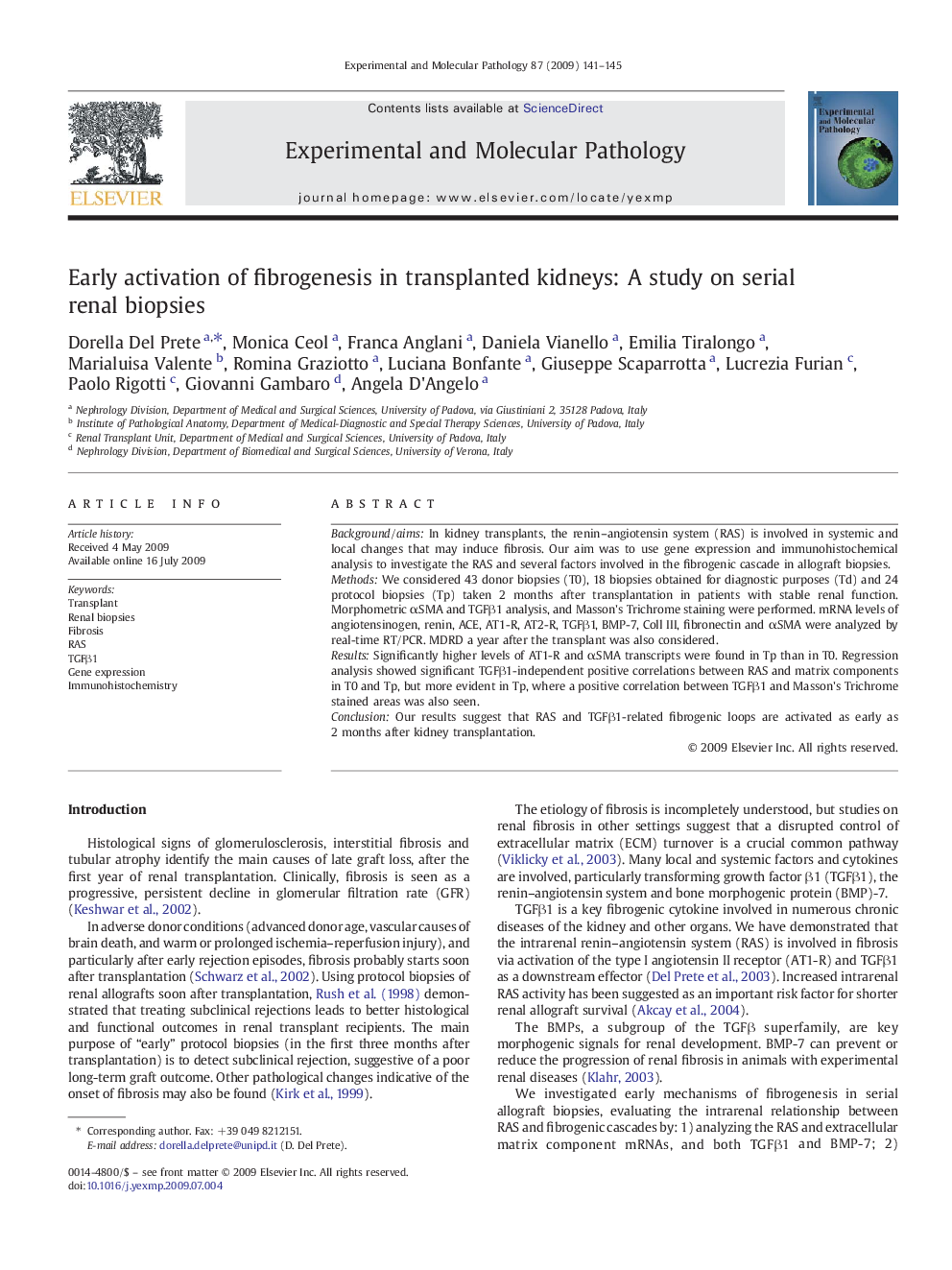| Article ID | Journal | Published Year | Pages | File Type |
|---|---|---|---|---|
| 2775675 | Experimental and Molecular Pathology | 2009 | 5 Pages |
Background/aimsIn kidney transplants, the renin–angiotensin system (RAS) is involved in systemic and local changes that may induce fibrosis. Our aim was to use gene expression and immunohistochemical analysis to investigate the RAS and several factors involved in the fibrogenic cascade in allograft biopsies.MethodsWe considered 43 donor biopsies (T0), 18 biopsies obtained for diagnostic purposes (Td) and 24 protocol biopsies (Tp) taken 2 months after transplantation in patients with stable renal function. Morphometric αSMA and TGFβ1 analysis, and Masson's Trichrome staining were performed. mRNA levels of angiotensinogen, renin, ACE, AT1-R, AT2-R, TGFβ1, BMP-7, Coll III, fibronectin and αSMA were analyzed by real-time RT/PCR. MDRD a year after the transplant was also considered.ResultsSignificantly higher levels of AT1-R and αSMA transcripts were found in Tp than in T0. Regression analysis showed significant TGFβ1-independent positive correlations between RAS and matrix components in T0 and Tp, but more evident in Tp, where a positive correlation between TGFβ1 and Masson's Trichrome stained areas was also seen.ConclusionOur results suggest that RAS and TGFβ1-related fibrogenic loops are activated as early as 2 months after kidney transplantation.
